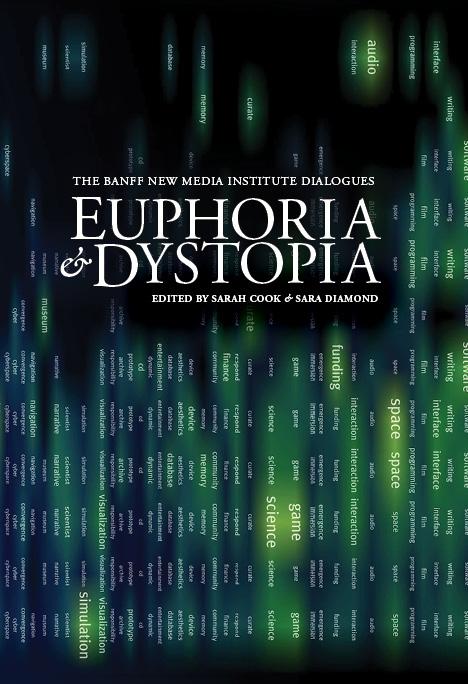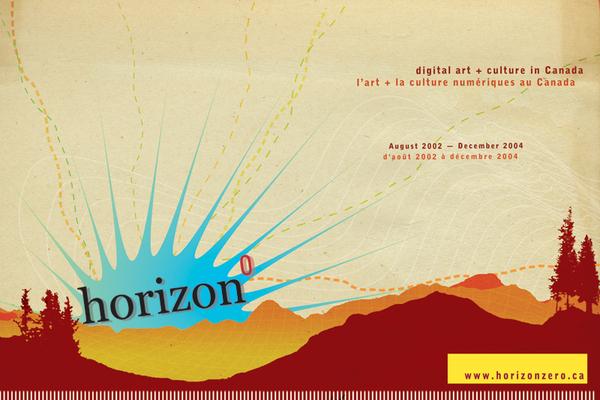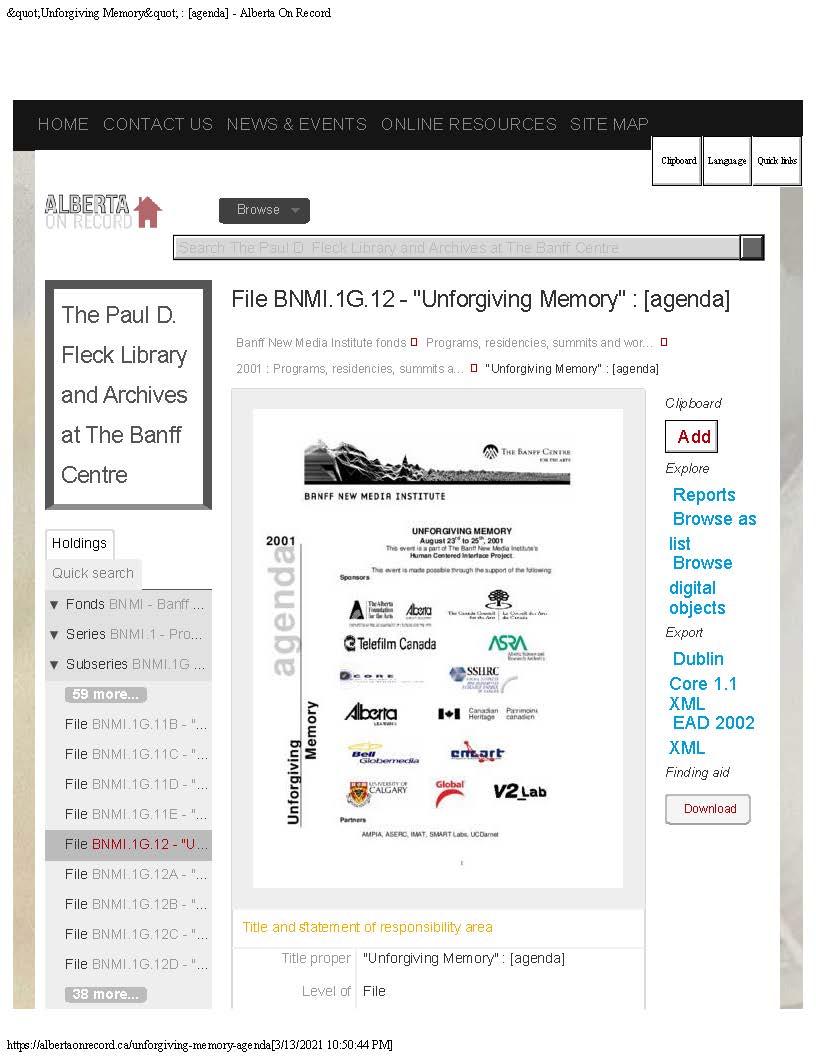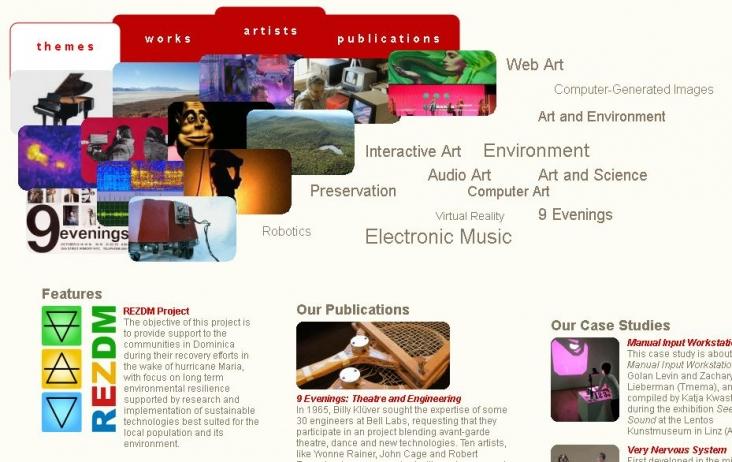Notes
[1] The BNMI archive does not contain complex
interactive new media art works. The Langlois Collection includes
documentation of video, web, CD, and interactive works but few are online.
My collection includes video and web works. New Media archiving is
demanding because of changing platforms - many works have found a home with
the Archives of Digital Art (ADA) and Rhizome, discussed later in this
essay.
[2] This is the argument that an
individual should be able to have their records removed from social media
and other Internet sites.
[3] It opened in 1994 and
the database was hosted over the years at several sites, eventually
migrating to Rhizome (a digital arts archive) who upgraded and restored it
for exhibition in 2016 at its affiliate the New Museum and online
presence
[4] The CCA’s National Archival Accession Standard Working
Group (NAASWG) wrote a content standard for archival accession information
which governs metadata standards, information sharing, research within and
across archives, and management of digital archives. See
http://archivescanada.ca/CWG_AccessionStandard. [6] For example, the sequential events Bridges (co-created
with Celia Pearce from the University of Southern California), Bridges 2,
and Skinning Our Tools bear testimony to the ways that the BNMI insisted on
bringing discussions of race and Indigenous identity to art, science, and
technology tables.
[7] Jules Bergis (2016) underscores the danger that digital
archives in particular, because of technical and programming needs will
exclude traditionally marginalized groups. [8] The BNMI was funded by the Canadian Tri-council
research agencies, Alberta research, Telefilm Canada, the Canada Council
for the Arts, Heritage and Industry Canada, international councils, and
Canadian and international industry.
[10] These include
machine learning, genomics, neuroscience, nanotechnology, Artificial
General Intelligence, social media, blogs, mobile devices and their
affordances, Augmented and Virtual Reality, open source, streaming, and
digital currencies.
[11] This memory was provided by Susan
Kennard, who was the Director of the BNMI from 2005 – 2010.
[12] It included essays reflecting on the
activities and themes of the BNMI, transcripts from the BNMI archives,
information on attendees, and a visualization of BNMI activities. A DVD
documenting horizonzero.ca was bundled with the book. The full version is
available here: https://livingarchitecturesystems.com/publication/euphoria-dystopia/.
[15] In
another example, the leadership of Toronto’s Design Exchange brought back
the original curator of its collection for the sole purpose of finding it a
new home; they followed Canadian Museum Association standards and it now
resides with the ROM and the Canadian Museum of History.
[16] “AtoM stands for Access to Memory. It is a web-based,
open source application for standards-based archival description and access
in a multilingual, multi-repository environment” (https://www.accesstomemory.org/en/). [18] Jean Gagnon provided details of the motivation
for these initiatives and the transition process in an interview with me in
March of 2021.
[19] The collection grew to comprise 2691 video works
or source documents, DVDs, documentary works and documentation of art
works, 2084 files of artists, festivals, biennales, 764 audio documents,
documentation, and CD-ROMs by artists. From 2000 to 2005 the Centre
acquired 6,000 books.
[21] Xerox is used here to
denote that Sheridan used Xerox processes rather than that she was a Xerox
employee.
[23] Partners are the
National Gallery of Canada, Musée d’art contemporain de Montréal, Montreal
Museum of Fine Arts, and Canadian Centre for Architecture including artists
such as Janet Cardiff, Stan Douglas, Gary Hill, Nam June Paik, David
Rokeby, Greg Lynn, and Bill Viola. Resources include a Preservation Guide for Technology-Based Artwork; a Cataloguing Guide for New Media Collection; a Documentary Mode adapted to media arts; DOCAM Glossauru, a bilingual terminological tool;
and a Technological Timeline, which includes both
media artworks and technological components.
[24] After Jean Gagnon left, the NGC terminated the role of media arts
curator.
[25]
CodeZebra was emulated from Flash onto the HTML5 platform, maintaining the
initial quality of its integrated web sites which began in 1997 and
continued until 2004. Unfortunately, several of the servers where the
original games and software resided are no longer connected and
reconstructing the links from the last version of the software to the site
is a project requiring future efforts.
[27] The partnership is comprised of OCAD University’s Centre for the Study of the Black Canadian Diaspora (CBCD) and Visual Analytics Laboratory (VAL), Simon Fraser University Archives (SFUA) and SFU Library Special Collections and Rare Books (SCRB), City of Vancouver Archives (CVA), The Royal British Columbia Museum (RBCM), the BC Labour Heritage Centre (BCLHC), BLAK, a Black artists’ centre in Surrey, B.C., and Satellite Video Exchange Society’s VIVO Media Arts Centre programming committee and Crista Dahl Media Library & Archive (CDMLA).
Works Cited
Alberta on Record n.d.b File 1.G - 12 “Unforgiving Memory”. Agenda, BNMI.
Bahde 2017 Bahde, A. “Conceptual data visualization in archival finding aids:
Preliminary user responses”. Libraries and the Academy,
17(3): pp. 485–506.
Beiguelman 2019 Beiguelman, Giselle. “Museums of Losses for Clouds of Oblivion”. In O. Grau, J. Hoth, and
Wandl-Vogt (eds.), Digital Art through the Looking Glass:
New strategies for archiving, collecting and preserving in digital
humanities. Austria: Edition Donau-Universität (2019).
Belkin 2008 Belkin, N. J. “Some (what) Grand Challenges for Information
Retrieval”. ACM SIGIR Forum, 42(2008): 47–54.
Breakell 2015 Breakell, Sue. (2015) “Archival practices and the practice of
archives in the visual arts’ Archives and Record”,
The Journal of the Archives
and Records Association, 36(1) pp. 1–5. Available at:
https://doi.org/10.1080/23257962.2015.1018151.
Carbone 2015 Carbone, Kathy (2015) “Artists in the Archive: An Exploratory Study
of the Artist-in-Residence Program at the City of Portland Archives &
Records Center”, Archivaria 79 (Spring 2015), pp. 27–52.
Carbone 2020 Carbone, Kathy. (2020) “Archival Art: Memory Practices,
Interventions, and Productions”, Curator: The Museum
Journal 63(2), pp. 257–263.
Caswell & Cifor 2019 Caswell, M. & Cifor, M. (2019). “Neither a
beginning nor an end: Applying an ethics of care to digital archival
collections” in The Routledge International Handbook of New
Digital Practices in Galleries, Libraries, Archives, Museums, and Heritage
Sites. Routledge.
Caswell 2014 Caswell, M. (2014) “Seeing yourself in history: Community archives
and the fight against symbolic annihilation”, The Public Historian, 36(4),
pp. 26–37. ISSN: 0272-3433, electronic ISSN 1533-8576.
Caswell, Cifor & Ramirez 2016 Caswell, Michelle, Cifor, Marika & Ramirez,
Mario H. (2016) “To Suddenly Discover Yourself Existing: Uncovering the Impact
of Community Archives”, The American Archivist,
79(1) (SPRING/SUMMER 2016), pp. 56–81. Published by:
Society of American Archivists.
Deleuze 1988 Deleuze, Gilles. (1988) Bergonism. Princeton:
Zone Books.
Diamond Q & A 2021 Project Endings Symposium, April 16, 2021.
Diamond-Battershill Chat 2021 Project Endings Symposium, April 16, 2021.
Fatona 2021 Fatona, A. (2021) “Digging us: making visible Black Canadian
narratives” in Crooks, J., Fontaine, D. & Forni, S. (eds.), History, art,
and Blackness. McGill-Queen’s University Press.
Foucault 1969 Foucault, Michel (1969). The Archaeology of
Knowledge. Trans. A. M. Sheridan
Smith. London and New York: Routledge, 2002. ISBN 0-415-28753-7.
Gagnon 2021 Gagnon, Jean (2021) “Interview with Sara Diamond”. Zoom, March 2021.
Grau, Hoth, Wandl-Vogt 2019 Grau, Oliver, Hoth, Janina & Wandl-Vogt, Eveline (eds.).
(2019) Digital Art through the Looking Glass: New strategies
for archiving, collecting and preserving in digital humanities.
Austria: Edition Donau-Universität.
Hall 2004 Foster, Hal. (2004) “An Archival Impulse”, October 110, Fall 2004,
pp. 3–22. © 2004 Hal Foster.
Hoth 2019 Hoth, Janina. (2019) “Historicization in the Archive: Digital art and
originality”. In Grau, Oliver, Hoth, Janina &
Wandl-Vogt, eds. (2019) Digital Art through the Looking Glass:
New strategies for archiving, collecting and preserving in digital
humanities. Austria: Edition Donau-Universität.
Kennedy 2021 Kennedy, Jen. (2021) “Across the Nebraska Border and the
virtual-material divide: contextualizing Shu Lea Cheang’s Brandon, 1994–1999”,
In International Journal of Performance Arts and Digital Media, 17(2):
Affiliated Issue with 2020 College Art Association Annual Conference Panel “Flesh and Circuit: Rethinking Performance and Technology” (Chicago,
IL, USA), Guest Editors: Conor McGarrigle and EL Putnam.
La Cinémathèque québécoise et la fondation Daniel Langlois 2011 Daniel Langlois Foundation. (2011), “La
Cinémathèque québécoise et la fondation Daniel Langlois ont conclu uneentente
permettant ainsi d'assurer la conservation et l'accessibilité de la collection
de la foundation”. Available at:
https://www.cinematheque.qc.ca/en/collections/daniel-langlois-fondation/.
Lar-Son 2020 Lar-Son, Kayla. (2020) “Archival Appraisal and Deaccessioning”,
Indigitization – Tools for Digitizing and Sustaining Indigenous Knowledge. Available at:
https://www.indigenization.ca.
Nass 2014 Nass, M. (2014) “Derrida's Preoccupation with the Archive in ‘The
Beast and the Sovereign’”, SubStance: 43(2), ISSUE 134: Fabled
Thought: On Jacques Derrida's The Beast & the Sovereign, pp. 20–36.
Oxford Research Archives 2014 ORA. (2014) “ORA deposit license”. Version 5:27
November 2014.
Sabharwal 2015 Sabharwal, A. (2015) Digital curation in the digital humanities preserving and promoting archival and special collections. Amsterdam: Elsevier.
Sabharwal 2021 Sabharwal, A. (2021). “Functional frameworks for socialized
digital curation: Curatorial interventions and curation spaces in archives and
libraries”, Library Trends, 69(3), pp. 672–695. Project MUSE,
DOI: 10.1353/lib.2021.009.
Simonsen & Robertson 2013 Simonsen, Jasper, and Robertson, Toni. (2013) International Handbook of Participatory Design. Routledge.
Smith 2020 Smith, Madelaine Page. (2020) Caring for the Moving
Image in Art Museums: Matters in Media Art and the Stewardship of
Time-Based Media Artworks. Thesis Department of Cinema Studies New
York University.
Smith, Bossen & Kanstrup 2017 Smith, R. C., Bossen, C., & Kanstrup, A. M.
(2017) “Participatory design in an era of participation”, CoDesign, 13(2), pp.
65–69. DOI: 10.1080/15710882.2017.1310466.










